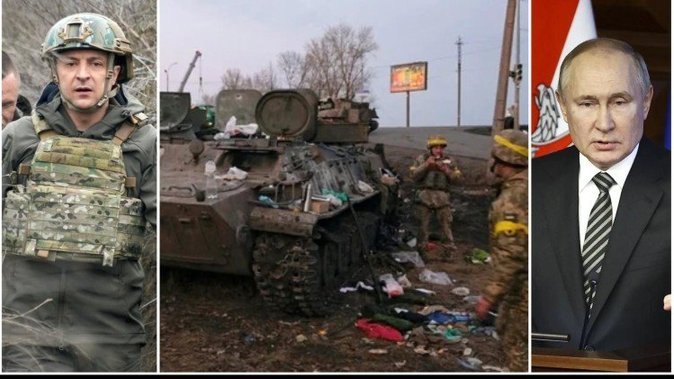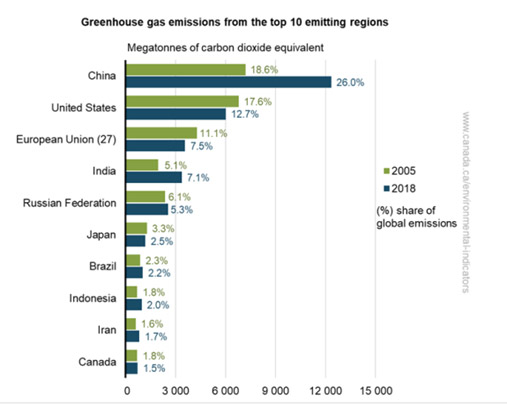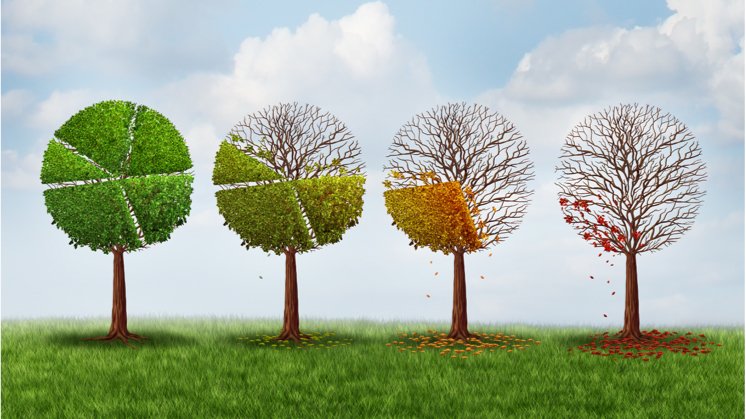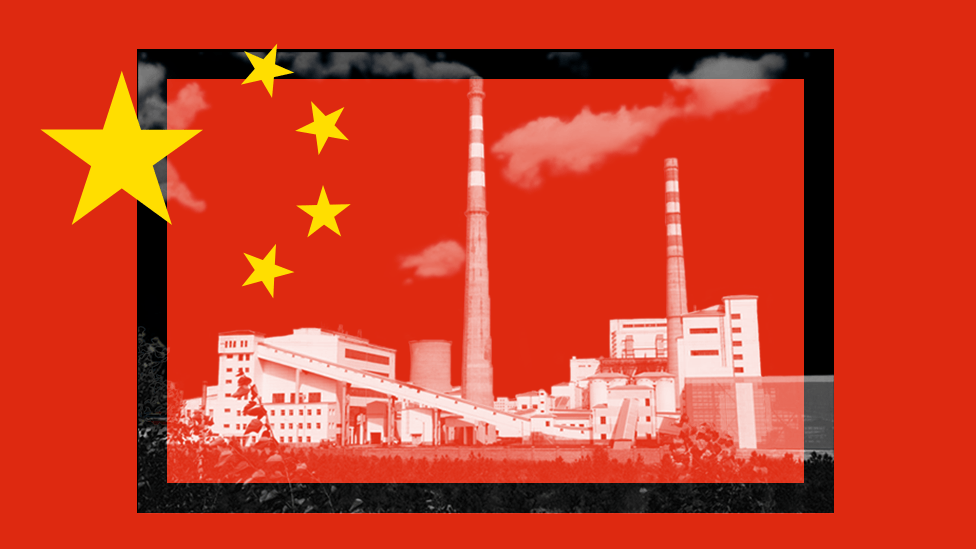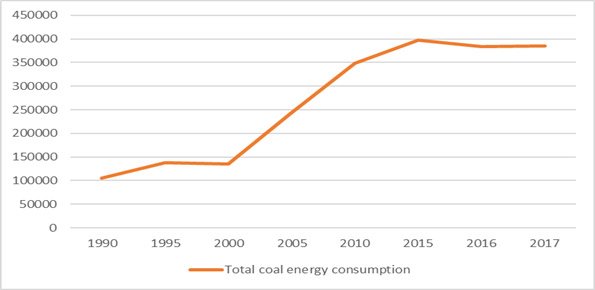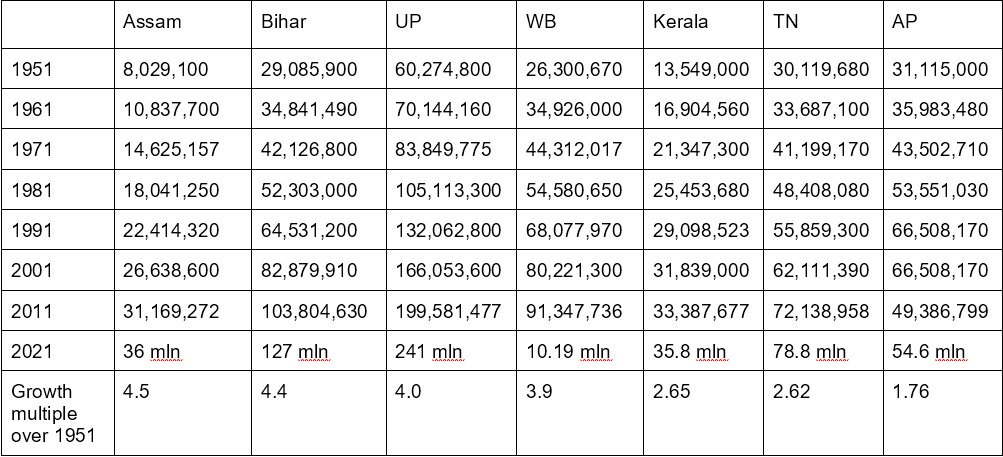Abstract
Spirituality too has its laws just as laws have a spiritual dimension. We pay considerable attention to manmade laws but not enough to natural or higher laws. A spiritualised, rather than litigious, society is more conducive to human welfare and well-being. This requires the voluntary adherence to Dharma which, in the present context, is righteous conduct and responsible citizenship. A responsible and virtuous populace will uphold true Svaraj, which means not just political independence, but robust self-government. In such a society, an enlightened and empowered public does not need external agencies to control or monitor it. Most citizens will not only be law-abiding, but they will also show concern and compassion for their fellow-human beings, for the nation, and also for the environment. But this cannot be attained only from the outside, by legislation, judicial systems, courts of law, the police and paramilitary, the bureaucracy, all lead by politicians or elected representatives. Change can come from within, by seeing oneself relationally as a part of others and of society, by regarding the world as one family (vasudhaivakutumbakam). That is how spirituality in practice can reduce our dependence on state control and the enforcement of laws. It would lead to a state of co-existentialism and cooperation. That is the true meaning of suraaj or a well-governed republic.
Introduction
Is there a connection between law and spirituality? It can be asserted without doubt and ascertained from past experience that a spiritualised (Dharmic) society, has far lower incidents of crime and lawlessness. Consequently, the need for a complicated system of justice and jurisprudence also reduces, because most people will not really want to break laws or harm one another. Throughout society, a fundamental understanding of the nature and of life on earth will prevail. This, then, can be our starting point for an understanding of the relationship between law and spirituality.
If we learn, from early on, to be responsible for the welfare of one another and for society at large, would not our lives improve dramatically? Not just that, our attitude to planet earth will itself change. Instead of fighting with each other and destroying the very habitat that shelters and nurtures us, we will celebrate the gift of life on earth as the greatest opportunity for service and satisfaction.
A beautiful hymn embodying the spirit of the United Nations composed in Sanskrit by the senior pontiff of the Kanchi Math, the late, great sage, Jagadguru Chandrasekharendra Saraswati, affectionately and reverentially known as the Paramacharya or Periyaswami exemplifies the same. It was sung at the United Nations on Oct. 23, 1966 to celebrate UN day by M. S. Subbulakshmi and Dr. Radha Viswanathan in raga Kaapi set to Adi Taala:
मैत्रीं भजत अखिलहृज्जेत्रीम्
आत्मवदेव परानपि पश्यत ।
युद्धं त्यजत स्पर्धां त्यजत
त्यजत परेषु अक्रममाक्रमणम् ॥
जननी पृथिवी कामदुघाऽऽस्ते
जनको देवः सकलदयालुः ।
दाम्यत दत्त दयध्वं जनताः
श्रेयो भूयात् सकलजनानाम् ॥
Here is a rendering into English alongside the line-by-line transliteration:
maitrīṃ bhajata akhilahṛjjetrīm – Cultivate friendship, which will conquer all hearts
ātmavadeva parānapi paśyata – Look upon others as your own self.
yuddhaṃ tyajata – Renounce war
spardhāṃ tyajata – Forsake competition
tyajata pareṣu akramam ākramaṇam – Renounce unrighteous aggression to acquire others’ possessions
jananī pṛthivī kāmadughā(ā)ste – Mother Earth is like the veritable Kamadhenu (wishfulfilling cow of plenty)
janako devaḥ sakaladayāluḥ – God, our father, is most compassionate
dāmyata – practice restraint
datta – give
dayadhvaṃ – be kind
janatāḥ – O people
śreyo bhūyāt sakalajanānām – May all people flourish and attain the highest goodness.[1]
To me this composition is the very essence of spirituality in action. A society following such principles would certainly not be excessively litigious.
Spirituality and Law
The word Spirituality comes from the Latin word ‘spiritus’ meaning ‘breath.’ The deeper meaning of this word is quite akin to what we call ‘prana’ from the ancient times. This Sanskrit word is now part of the vocabulary of most modern Indian languages. It refers, simply speaking, to the non-corporeal aspect of who we are. The underlying idea is that we are not merely the body. There is an aspect of our existence, call it cit, chetana or consciousness, which cannot be reduced to the body.
If we were to understand this in terms of Advaita Vedanta, then we would say that I (as Ātman) am not just merely the body; of course, the body is mine, but I am consciousness (Brahaman) and consciousness is infinite.[2] Consciousness has no beginning and no end. Hence, the ‘prana’ that lives within each one us is infinite. Hence, spirituality is the realisation of a sense of vastness and oneness in our daily lives. This may sound a bit farfetched, but when we look at the stars in the clear night sky, trillions upon trillions of them, too many to conceptualise, let alone count, we are filled with a sense of awe and wonder.
Similarly, when we consider or contemplate our own bodies, usually no more than six feet tall, we are astounded that they contain trillions of tiny cells, each with their well-defined and separate functions. What is more, our own bodies consist of the same particles, atoms, molecules, and above all, space or emptiness, that the rest of the universe is made of. There is literally no way to determine where we end and the rest of the universe begins. Our individuality, thus, is much more of a mental construct than a physical fact. The whole of reality is one interconnected and complex network or system. We thus begin to see ourselves as being beyond just our tiny bodies or limited minds.
Now, let us consider the word ‘law.’ It too is derived from the Latin and etymologically related to words such as lex, ius, jus, iurisdictio, jurisdictio. All of these point to something that is normative and binding, ultimately something that is written down and codified. But in India, we were rarely governed in our past by elaborate legal systems or written down codes. There was a common understanding of what was right and wrong derived from the practice of Dharma. People’s conduct in everyday life was guided by this common, albeit, unwritten “constitution” of the land. In most cases, problems were solved, disputes settled, and satisfactory results achieved without resorting to elaborate and costly litigation.
Our judicial system, in the modern sense, can be traced back to the colonial period. The Indian Penal Code, which is still in force, was notified in 1862. But it was drafted even earlier, after the setting up, under the East India Company’s Charter Act of 1834, of the first law commission of India. Its chairman was none other than Lord Thomas Babington Macaulay. This system was imposed upon us by our erstwhile foreign rulers to take control of our territories, seize our natural resources, and put our people to work for them? Our laws and their enforcement mechanisms, our justice delivery system, and, indeed, the whole system is thus a legacy of legal imperialism?[3]
Speaking from an Indian perspective, Lord Macaulay was the same person who penned the notorious “Minute” on Indian education in 1835. While amplifying “white man’s burden,”[4] he made the sweeping and derogatory statement, “A single shelf of a European library was worth the entire literature of India and Arabia”.[5] With the intention to shape the Indian legal and education frameworks to rule India, Macaulay and the “brown sahibs” he created in service of our colonial masters, were trained to understand and administer law, legal theories, legal institutions and legislations imported from the European continent.
Not just Mahatma Gandhi, but many other notable freedom fighters were lawyers and barristers—Jawahar Lal Nehru, Mohammad Ali Jinnah, Dr Bhim Rao Ambedkar, Sardar Vallabhai Patel, Mohammadali Carim Chagla, and Vinayak Damodar Savarkar, to name a few, although the last did not become a barrister because he was already a marked man as an enemy of the British Empire. The irony is that all these men were legal luminaries of their time but most of them were actually jailed for breaking despotic British laws. They knew that the imported legal system that was imposed on us by the British did not sit well with our cultural orientation. This whole state of affairs can further be elucidated by this short excerpt from William Dalrymple’s book, The Anarchy[6]:
…existing methods of revenue collection were maintained, run out of Murshidabad offices that were entirely staffed with Mughal officials. But frock-coated and periwigged British officials were now everywhere at the apex of the administrative pyramid, making all the decisions and taking all the revenues…colonial proprietor and corporate state, legally free, for the first time, to do all the things that governments do: control the law, administer justice, assess taxes, mint coins, provide protection, impose punishments, make peace and wage war.
It was a system of outright loot under the flimsy cover of law. So, you can see why our judicial system may be mismatched to our civilisational practice, which is based on the sanctity of the spoken word, not on written documents. That is why we say in India, “Raghukula reet sada chali ayi, praan jayi par vachan na jayi.” Vachan refers to giving one’s word, which one must maintain under all circumstances. One’s word is one’s bond. That is the essence of Dharma. But these days, only a written agreement is considered valid or legally enforceable. This means that society does not hold people accountable for what they say, that lying is not just common but considered acceptable. But a society that does not respect truth, whether in thought, word, or deed, cannot be a Dharmic society. When the amount of salt added to food exceeds the pinch that adds flavour to it, the whole meal is spoiled. Similarly, the whole society in which untruth exceeds the tiny quantum that is necessary for the smooth functioning of day-to-day routine, the whole society is destroyed.
For a society which follows spiritual principles, there is no need or temptation to take what is not ours, let alone torture others in order to do so. If we are not separate from other people, then where is the compulsion to hurt others or be unkind to them? If we take a moment to look around ourselves, we feel surrounded by the frenzy of violence and injustice, not only towards human beings but also the planet. There are heinous crimes of manslaughter, rape, robbery, battery, assault, and so on, being carried out on a daily basis. We cause grievous hurt to one another as well as trifling wrongs of broken promises, civil injuries, cheating, fraud, and so on. Should we begin to see all beings as parts of ourselves, suffering the same pain and pleasure, heat and cold, hunger and thirst—then much of these wrongs would cease.
To put it in a nutshell: “Being spiritually enlightened or awakened would change our fundamental attitudes to ourselves, to other lives and to other human beings.” When we go deeper into this issue, we will realise that a fully awakened (not woke!) populace will obviate the need for the kind of legal system which we have today, and which most of us will agree, doesn’t really work well. But this is an ideal state. More practically, we need to reform our present legal system even as we try to spiritualise ourselves and our nation.
Justice Delayed Is Justice Denied: What Ails Our Legal Framework?
At present in India, there are 3.9 crore cases pending in the district and subordinate courts. There are another 58.5 lakh cases pending in various High Courts and more than 69,000 cases pending in the Supreme Court. So, the cumulative figure comes close to 4.5 crore or 45 million pending cases in the Indian judiciary.[7]
This is an immense and unconscionable figure by any standards, as our own Hon. Supreme Court justices have observed. Our daily experience is that what passes for justice, ends up in litigation, which results in endless harassment. This incessant torture in getting through a legal suit is well explained in the memoir, Anita Gets Bail,[8] by former union minister, distinguished writer, and former editor of the Indian Express, Dr. Arun Shourie. He narrates how one fine day there’s a knock at his door—it’s not the dreaded midnight knock that we associate with communist regimes, but rather a mid-afternoon knock. A posse of police people arrive at his residence and say, “Sir, is there somebody called Mrs. Anita Shourie here? We have a warrant for her.” The author replies to that shocking piece of information with a polite counter-question, “Can I know what the charge is?”
To cut the long story short, we discover that Mrs Shourie is being charged with building a farmhouse on protected forest land in the Aravallis on a property that she does not even own. After endless visits to the court, far away in Faridabad, the mess is sorted out. But for Mrs Shourie, who suffers from Parkinson’s Disease, as for the entire family, it has been nothing short of a nightmare to deal with India’s civil and criminal justice system. Let me also highlight another key concern of the author. The incomprehensible language of the judgements of our learned judges, how it is practically impossible for an ordinary citizen to make head or tail of what is going on in any case that he or she may have the misfortune of being entangled in. What the memoir tells us is that even a man of the stature and qualifications of Dr Shourie is unable to grapple with our legal system. What then of millions of less fortunate citizens who are tied to this unintelligible and inefficient law and law enforcement mechanism?
Along those lines, it is difficult not to mention a very famous novel, The Trial, by Franz Kafka,[9] which illustrates legal and metaphysical dystopia even more dramatically. The protagonist in the novel is being tried for a charge he doesn’t know of, a crime that he hasn’t committed, and in the end is sentenced to death, after very bizarre and illogical legal proceedings. Red tape and the complications of the law are satirised in this novel but it is an utmost existential crisis that is being portrayed in it.
In another essay from 19th century, Civil Disobedience,[10] the author, Henry David Thoreau, narrates how he spent a night in jail for refusing to pay taxes. The punishment imposed on him prompted him to write this celebrated essay, which subsequently influenced Mahatma Gandhi. The main theme of Civil Disobedience is that there is a law that is higher (natural law) than man-made law. Man-made law is not perfect because man is not perfect. This very idea went on to become the inspiration for Gandhi to lay the cornerstone for his own Civil Disobedience campaign.
The above examples drawn from literature highlight the common, underlying idea that human laws are not immutable, but subject to time, space, customs, and prevailing beliefs. They need constant scrutiny and modification if they are to serve their purpose and if, more importantly, justice is to be served.
Gandhian Methods: Spiritual Means to Attain Legal Ends
As we know from our freedom struggle, Gandhi was a constitutionalist, but he became the most celebrated law-breaker in history. How did this happen? If human laws are found totally unjust and oppressive when measured against higher laws, Gandhi believe that one must disobey them. This is precisely what he did, gladly bearing the punishment. He became a prisoner of conscience, spending a total of over eleven years in colonial prisons. He was arrested frequently, on one occasion thrice in four days! But it was the British Empire which was on trial, not he. As a truthful, moral, and upright person, he was telling the world that in an unjust society, the best place for an honest man was the jail. In a discourse of Law and Spirituality, the work of Gandhi to raise voice and gather mass support against the despotic British law is too distinguished and memorable to be forgotten.
Gandhi is most popularly known for how he shook the very foundations of the British Empire that ruled more than 1/4th of the entire land mass in the world by his simple but powerful grassroots method of Satyagraha. The word ‘Satyagraha’ is a compound of two Sanskrit nouns, ‘Satya’ meaning ‘Truth’ and ‘Agraha’ meaning ‘insistence.’ To insist on truth was the Gandhian way. If it necessitated the breaking of unjust laws, he did not hesitate to do so.[11] Unfortunately, today, we have trivialised Satyagraha. We have become a culture of protesters, demanding even unfair and unjust things – andolanjeevis, professional protesters as one of our national leaders put it. But for Gandhi, ‘Satyagraha’ meant ‘Truth-Force,’ which he also called “love-force or soul-force”. In his autobiography, My Experiments With Truth, Gandhi confessed that he derived moral and spiritual guidance from Bhagavad-Gita.[12]
The Mahabharata, of which the Gita is a part, famously says, “Ahimsaparamodharmah” – non-injury is the supreme Dharma. But our ultimate duty is to safeguard the dharma itself. Only then will dharma also protect us: धर्मो रक्षति रक्षितः, as the Manava Dharmashastra (8.15) puts it: “Those who protect Dharma are protected by the Dharma.” Gandhi was able to use non-violent resistance to morally compel the colonial government not only to change its laws, but eventually to leave India. Today, his methods are used in many parts of the world by those who wish to exert pressure on their own governments to change.
Gandhi believed that ruling and governance not be limited to the elites of the society. Self-rule or svaraj meant that the entire community had to be uplifted and enlightened. For these very reasons, Gandhi, along with Mrs. Kasturba Gandhi, conducted many experiments and rural development projects all over India.[13] In his seminal work, Hind Swaraj (1909), he spoke at length of his idea of an ideal society, based on truth and non-violence. Gandhi also criticised lawyers, although he was himself a barrister, for fleecing their clients and doing little to resolve disputes. The fact that Gandhi’s call for Satyagraha was well received by the Indian people is enough to prove that Indian society is dharmic, rather than legal in its orientation. What is noteworthy here is that the Indian populace could accept and act on a path shown by Gandhi because it felt organically and intrinsically a part of Indian culture and society.
Gandhi’s ideal was to make India a self-governing and dharmic society. The living example of this is how, even today, we are one of the least policed, criminalised, or legalised society per capita. Dozens of villages may have just one police station, with only 2-3 law enforcement officers keeping the peace with just sticks and bicycles. How is this possible? It is because the populace is quite capable of regulating and governing their internal matters at the local level itself. That is also the reason why legal recourse is not only frowned upon but is looked down upon as something artificial, foreign, incomprehensible, not to mention enormously expensive and ruinous.
When you are truthful and follow dharma, you hardly need the law. In today’s times, the state of affairs in India is such that a law-abiding citizen in India becomes anxiety-stricken when approached by a policeman. What is he going to get me for, is the first question that pops up. Doesn’t that tell us something? Law enforcement and the legal system have got a bad name. The reason? Right back to Mughal times, the office of the Kotwal was known for its corruption and extortion. Some of those bad practices continue which leads to lack of trust between the citizens and the legal system that is governing them. On the other hand, the intrinsic dharmic nature of India does not need an expansive and expensive apparatus of law to decide what is right and what is wrong for citizens. In a dharmic society, it becomes the first nature of citizens to act in alignment with righteousness. In other words, the connection between Spirituality and Law is that in a highly evolved and dharmic society, the latter is far less important. Instead, of increasing the number of courts, judges, and laws, we need to re-emphasise Dharma, which does not require an artificial and imposing judicial system.
What Can We Do?
We have already seen that we need to link law and spirituality because human laws can be deeply flawed. But there is also the urgent need to decolonise legal systems. Not only our own, but legal systems around the world are a legacy of the British or other European colonial powers. These systems carry their euro-centric features which are often inconsistent with the deep-seated value system and historical progression of our societies.
Therefore, there has been a longstanding demand to overhaul or amend our inherited laws and justice mechanisms. In addition to the civilisational mismatch, many laws inconsistent with the ground realities and practicalities of India have also come under scrutiny. For instance, in contemporary times, LGBTQ rights and scrapping of provisions of the sedition law have been at the forefront of these debates. Homosexuality was criminalised in Section 377 of the IPC during British rule. This decision to criminalise homosexuality was made to conform to Christian religious values although the practice was secretly rampant in the Church for centuries. There was an additional reason: to protect young, colonial males from predatory sexual marauders. The latter may still be found, as in Afghanistan, where “bachabazi,” the practice of abusing pre-puberty boys still persists. Ancient Indian culture was far more sexually permissive. Same-sex love was not taboo, though it was not the norm.[14]
As to the sedition law, the Indian judiciary unites to question this tyrannical British law. Addressing Attorney General K.K. Venugopal and Solicitor General Tushar Mehta appearing for the Centre, Chief Justice of India, N. V. Ramana noted, “Sedition is a colonial law. It suppresses freedoms. It was used against Mahatma Gandhi, Tilak… Is this law necessary after 75 years of Independence?”
The reality is that despite the visible dissatisfaction with the colonial remnants in the Indian legal system, we are still following them although some of them are antiquated and unjust measures. India has inherited the laws that our own freedom fighters struggled against, often defied, broke and went to jail for. It is utterly poignant that some of those laws still persist in India. Under these “Rowlatt Act”[15] type of regulations the state can imprison and hold us for almost any length of time without having to justify its position on such detention. Our colonial masters used these laws to stifle and subdue us. Unfortunately, the independent state of India is using these very laws, and more like them such as UAPA, MCOCA, AFSPA, and NSA, against its own citizens. Worse, every major political party, when in power, has taken recourse to them.
Even under the normal provisions of the law, a person may be arrested and detained, just for making a statement considered inflammatory. To offer a very recent example, Union Minister and Rajya Sabha MP and former CM of Maharashtra, Narayan Rane, was detained for his allegedly offensive remark against Maharashtra Chief Minister Uddhav Thackeray. He was charged with Section 153 (wantonly giving provocation with intent to cause riot, if rioting be committed, if not committed) and 505 (statements conducing to public mischief) of the IPC. This event brings to light the opacity and unintelligibility in the legacy of the British legal system as can also be seen from the fact that not once in the history did the collegium of the Supreme Court elevate a single professor of law or a notable jurist to the rank of a judge, despite having the powers to do so.[16]
Dharma, Law, and Contemporary Challenges
Law emanates from morality or Dharma, not the other way round. You can have Dharma without law, but never law without Dharma. Moreover, as we know only too well, Dharma and morality are never static.[17] They change with time, space, and circumstances. Take for example today’s debate over imposition of Sharia Law in Afghanistan. The Sharia was codified many centuries ago. Most would consider it not suitable for current times. Arguably, both Judaic and Islamic laws go all the way back to Hammurabi’s Code,[18] with its principle of “lex talionis” or retaliatory justice, commonly known as “an eye for an eye and a tooth for a tooth.”
Gandhi famously said that such a law would render most of the world blind. However, harsh punishments such as cutting off limbs for stealing or stoning to death for adultery are still in vogue in some societies. Long ago, even Jesus Christ discouraged such harsh and inhuman punishments. In the Bible[19] there is a famous passage when Jesus intervenes to stop a group of people from stoning a woman for adultery. Jesus says, “He that is without sin among you, let him first cast a stone at her” (John 8:7 KJV). Clearly, the counter-argument against these primitive laws is that they violate human rights. Moreover, penal action cannot justify excessive violence or cruelty. To consider manmade law as immutable or permanent is, therefore, undesirable and retrogressive. It puts human law in conflict with the higher law, which we may term natural or divine law.
Taking such examples from scriptures, religious codes, and history, we can draw the inference that man-made laws are not perfect because man is not perfect. Our laws have to be measured against higher laws to come to a more reasonable interpretation and application of law that actually serves human beings. A purely legalistic and normatively overdetermined system, with an endless array of mandates and caveats, does not align with the inherent ethics and moral inclinations of a given society. An overly positivist approach to law is not only unnatural but also defeats the purpose of having law and legal framework itself. In that light, it was observed by Justice P. N. Bhagwati in the Hussainara Khatoon case,[20]
Today, unfortunately, in our country the poor are priced out of the judicial system with the result that they are losing faith in the capacity of our legal system to bring about changes in their life conditions and to deliver justice to them… The law is regarded by them as something mysterious and forbidding– always taking something away from them and not as a positive and constructive social device for changing the social economic order and improving their life conditions by conferring rights and benefits on them. The result is that the legal system has lost its credibility for the weaker sections of the community.
If we read this excerpt in the light of what I have stated earlier, we will find that the emphasis on self-regulation and Dharma will save us from endless and incomprehensible legal procedures, extortionate litigation, and delayed justice. Instead, a responsible citizenry, vigilant about each other’s rights and welfare, will result in overall good governance and peaceful society.
Attempts have been made to incorporate traditional methods in judicial remedies and mechanism, and such attempts have had favourable results. Lok Adalat[21] is an example. Similarly, if we resort to mediation before and arbitration after litigation, we will reduce the endless pile of pendency in our courts. Such mechanisms will provide citizens with expedient, inexpensive, and less tedious means of legal redressal. But, even more importantly, if we weave the social and legal fabric with the unbreakable threads of dharma, we would not even need to reach the pretrial stage. That is because no one would wrong another and thus no one would have to suffer needlessly. Of course, this is the ideal state and does not obtain anywhere in the world at present. But it is substantially evident that wherever people are more Dharmic, crime, lawlessness, and violence are mitigated. That is what the idea of Ram Rajya signified originally and whose connotations were revived by Mahatma Gandhi during the freedom struggle.
Delimitation: Breaking or Building the Wall?
To avoid misunderstanding, let me clarify that this paper is not advocating a case for the abolition of law. Law cannot and should not cease to be in our times. There are institutions of modern-day society which require laws and robust enforcement mechanism. International business will not invest, let alone flourish, in India without well-defined statutes and enforceable contracts. The case of the reversal of the palpably unjust and unsustainable retrospective taxation clause is a good example Though the Indian government stands to lose over a billion dollars, we have saved our face and reputation as a country where laws are not changed retroactively and arbitrarily. We suffered enough by driving out Coke and IBM in 1977; such pseudo-socialistic measures need not be repeated under the guise of Swadeshi or Atmanirbhar Bharat. Rather, our resilience and reliability can be built only on a culture of excellence and ability to compete globally.
Similarly, the entire legal framework of Company Law, Intellectual Property Law, Taxation Law, Information & Technology Law, Media Law, and so on are absolutely required today as are civil and criminal law. What is attempted to being conveyed is that human wellbeing and welfare cannot be ensured only from outside. Instead, an inside-out transformation is the Indian way. This is where Dharma and spirituality come into the picture. When we become better human beings, we will also become less conflicted and contentious. Direct and speedy resolutions of disputes in such a society will be a matter of daily practice rather than protracted and, oftentimes, fruitless litigation.
In a dharmic society that India is, there is oneness in how one sees our fellow human beings. In such a view, the odds to inflict any type of harm and distress to others reduces dramatically. If 95 percent of the people follow Dharma, then the law can deal with the 5% who don’t. Religions were invented by humans as codes to regulate human conduct. As the noted Jewish historian, Yuval Noah Harari in his much-celebrated book, Sapiens[22] puts it:
In order to survive, the inhabitants of a particular valley needed to understand the superhuman order that regulated their valley, and to adjust their behaviour accordingly. It was pointless to try to convince the inhabitants of some distant valley to follow the same rules. The people of Indus did not bother to send missionaries to the Ganges to convince locals there…Being communicated with one another directly and negotiated the rules governing their shared habitat.
Even before the advent of Islamic or European invaders, Indians were capable of regulating their internal matters and community affairs from time immemorial as can be seen from India being the hallmark of civilisations, cultures and traditions. Assimilation of European legal modules, theories and institutions have neither fully derailed things nor destroyed the traditional Dharmic framework of our civilisation. The challenge is only to realign ourselves and our legal framework to our age-old Dharma. This is exactly what Gandhi advocated in Hind Swaraj.
Conclusion: From Dharma to Moksha
We have delved into spirituality mostly in terms of Dharma, but before we close, we can go even deeper, towards Moksha, or liberation. The purpose of human life is maximum freedom. Freedom from wants, cares, suffering—even freedom from bodily limitations and death. India is a country of seekers, not of believers. What this means is that we ask innumerable questions and find innumerable answers to them. We look for better and better ways to be human as also to exceed and transcend our humanity.
Towards that end, let us briefly examine the paradox that the topic “Law and Spirituality” presents. One view is that they belong to two entirely different realms, as the Biblical injunction found in the synoptic gospels, “Render unto Caesar the things that are Caesar’s, and unto God the things that are God’s” (Ἀπόδοτε οὖν τὰ Καίσαρος Καίσαρι καὶ τὰ τοῦ Θεοῦ τῷ Θεῷ) [Matthew 22:21, KJV]. Law belongs to the practical aspect of life and spirituality belongs to what is beyond whatever our senses can grasp. In this regard, there is a hard position, as suggested above, that separates these two and an equally hard contrary position in which both belong to the same world, without separation, as we find in some schools of Islamic jurisprudence. Believing that Law and Spirituality are interconnected but not identical, I take the intermediate position. I say this because you need practical wisdom to succeed in the world. For a grihasta or householder, aparigraha,[23] would be disastrous. But, by the same token, success in the world does not guarantee true happiness either. If it did, why would the rich be miserable, to the extent even of committing suicide?
My experience tells me that those who do not have what it takes to succeed in the world rarely do well on the spiritual path either. Why is this the case? That is because to achieve siddhi or victory on the latter path is even harder, requiring more energy, expertise, application, dedication, and persistence than attaining worldly success. And why not? When the rewards are reportedly and reputedly greater?
That is why in India we evolved the idea of the four purusharthas or the cardinal aims of human existence, namely, dharma (righteousness and virtuous conduct), artha (money and power), kama (pleasure and satisfaction), moksha (liberation and freedom from suffering).[24] The nature of dharma and moksha bears on the theme beyond the physical realm, while artha and kama are the vehicle of finding our way through that physical realm. In order to combine Law and Spirituality, let us take dharma and moksha on one side, and kama and artha on the other side. You will see that we need both in order to develop our full potential and to find happiness in the here and now, as well as achieve freedom from fear, whether of suffering or death. As long as we are afraid to suffer, we can never be free. Therefore, upon conjoining the two, we can pave our way to more holistic human flourishing.
That is why I say, instead of litigation, go towards arbitration; instead of arbitration, go towards mediation; instead of mediation, go towards discussion; instead of discussion go towards spirituality. Then we can reach to the higher truths, doing away with our inter-personal as well as intra-personal conflicts. We learn to accept others as they are rather than insisting on making them the way we want them to be. We also learn to accept the world as it is, without giving up our duty to make it a better place.
So rich and effective is spirituality in awakening our higher senses and intelligence that India invented and curated myriad yogic and other practices to align the physical, vital, mental, psychic and spiritual dimensions of our being. This fivefold integral yoga by Sri Aurobindo[25] is one such well known works of spiritual and yogic practice. I highlight this because I believe that each one of us has a ‘shakti punj’ (source of energy) within us. And by channelizing this energy in the right direction and with good intentions, we can unlock a higher realm of existence where everyone means well for fellow human beings and the need for positive, rule-based law will be in perfect harmony but not supersede natural law and divine law.
If society is spiritualised, law will also not be untouched from such a reform. Because, as stated earlier, law adjusts itself according to the needs and priorities of the society. This would reduce crime, violence and overall lawlessness, which, in turn, would reduce the need for litigation. Hence, spiritualising the society to address our interrelations with each other is the most feasible and attractive way to secure equity and fraternity, not to mention reducing the burden on our already over-loaded and unwieldy justice system.
The “Golden Rule,” “Do unto others as you would have them do unto you,” uttered in this form by Jesus in “The Sermon on the Mount,” is found in some form or the other in all traditions.[26] As a negative injunction, attributed to Confucius, it is equally effective: “Do not do to others what you do not want them to do to you.” Although absolute non-violence is not possible because life feeds on life, but we can certainly forswear the intention to hurt others. If out of 7.9 billion people on the planet, even if one billion internalise and practice spirituality, the world would be a completely different place.
Finally, in a spiritualised world, there is more meaning to life because now nobody is living solely for themselves. Spirituality is capable of bringing communities together and unifying them in mutually satisfying and enhancing partnership.
India won its svaraj from British rule, at least in terms of political independence, nearly 75 years ago. But has it also attained suraaj – good governance, leading to a society in which the well-being of all is ensured? When it comes to our legal system, how many common citizens feel protected and safe under it? Are cases resolves speedily, justice dispensed in a timely and fair manner? How much trust is there between the rulers and the ruled, although the former are supposed to serve the latter? Such questions do not have simple answers. We are a nation in the making, a society still being re-formed after centuries of oppression and destruction. We cannot be too harsh in our self-criticism, but rather demonstrate patience and faith in the destiny of India. But if the Dharmic foundations of our society are strengthened and if our society is spiritualised, attaining suraaj in addition to svaraj, will not remain a dream. It will become a reality.
Let me end with the famous assurance that occurs no less than eleven times in the Mahabharat: यतो धर्मस्ततो जयः (Yato Dharmas tato Jayah). It means, “Where there is Dharma, there will be Victory.” This is also the motto of the Supreme Court of India.
Author Brief Bio: Prof. Makarand R. Paranjape is a Professor of English at Jawaharlal Nehru University, New Delhi.
References:
[1] See the official website of the Kanchi Sankara Math for their rendering and photos of the performance: http://vandeguruparamparaam.blogspot.com/2016/10/maitreem-bhajatha-timeless-poem-for.html.
[2] Deutsch, Eliot, Advaita Vedanta: A Philosophical Reconstruction, University of Hawaii Press. 1973. p. 3 note 2
[3] Schmidhauser, J. R. Power, “Legal Imperialism and Dependency,” Law & Society Review Vol. 23, No. 5 (1989), pp. 857-878.
[4] Easterly, William. The White Man’s Burden. Oxford University Press, 2007
[5] http://www.columbia.edu/itc/mealac/pritchett/00generallinks/macaulay/txt_minute_education_1835.html
[6] Dalrymple, William. The Anarchy: The East India Company, Corporate Violence, and The Pillage of an Empire. Bloomsbury Publishing 2019. p. 209
[7] Pending Dashboard, National Judicial Data Grid, last accessed 8 September, 2021, https://njdg.ecourts.gov.in/njdgnew/?p=main/pend_dashboard
[8] Shourie, Arun, Anita Gets Bail: What Our Courts Are Doing? What Should We Do About Them?. (New Delhi: HarperCollins Publishers India, 2018).
[9] Kafka, Franz, The Trial (New York: Schocken Books, 1999).
[10] Thoreau, Henry David. Walden and “Civil Disobedience”. New York: Signet Classics, 1980.
[11] Diwakar, R. R. : Saga of Satyagraha. New Delhi: Gandhi Peace Foundation, 1969. p. 1
[12] Gandhi, Mahatma. An Autobiography: The Story of My Experiments with Truth. Washington DC: Public Affairs Press of Washington, 1948.
[13] Gandhi, M.K, India of My Dreams, (Ahmedabad: Navajivan Publishing House, 1947).
[14] Ray, S., “Indian Culture Does Recognize Homosexuality, Let Us Count The Ways,” The Quint, September 11, 2018.
[15] Rowlatt Acts, 1919, legislation passed by the Imperial Legislative Council, the legislature of British India. The acts allowed certain political cases to be tried without juries and permitted internment of suspects without trial.
[16] Chhachhar, V. “Appointment Of Judges In India Through Collegium System: A Critical Perspective.” Sml. L. Rev. 208 (2018).
[17] Cicero, Marcus Tullius, and James E. G. Zetzel. 1995.
[18] Hammurabi, King of Babylonia., and Robert Francis Harper. The Code of Hammurabi, King of Babylon About 2250 B.C.
[19] Bible: Epistle of James. James 2:11
[20] Hussainara Khatoon & Ors vs Home Secretary, State of Bihar, 1979 AIR 1369, 1979 SCR (3) 532
[21] Section 19 & 20, Legal Services Authorities Act, 1987
[22] Harari, Yuval N. author. Sapiens: A Brief History of Humankind. New York:Harper, 2015.
[23] Aparigraha- non-accumulating material possession and worldly pleasures. The five great Yama in Patanjali’s Yoga Sutras are Non-violence-Ahimsa, Truth-Satya, Non-stealing-Asteya, Celibacy-Brahmacharya, Non-attachment/Non-possession – Aparigraha
[24] Bhagavad-Gita
[25] Sri Aurobindo was an Indian philosopher, maharishi, yogi, poet, and Indian nationalist. See The Penguin Sri Aurobindo Reader ed Makarand R Paranjape (New Delhi: Penguin, 1999).
[26] Simon, Blackburn, Ethics: A Very Short Introduction, (Oxford: Oxford University Press), p. 101.

